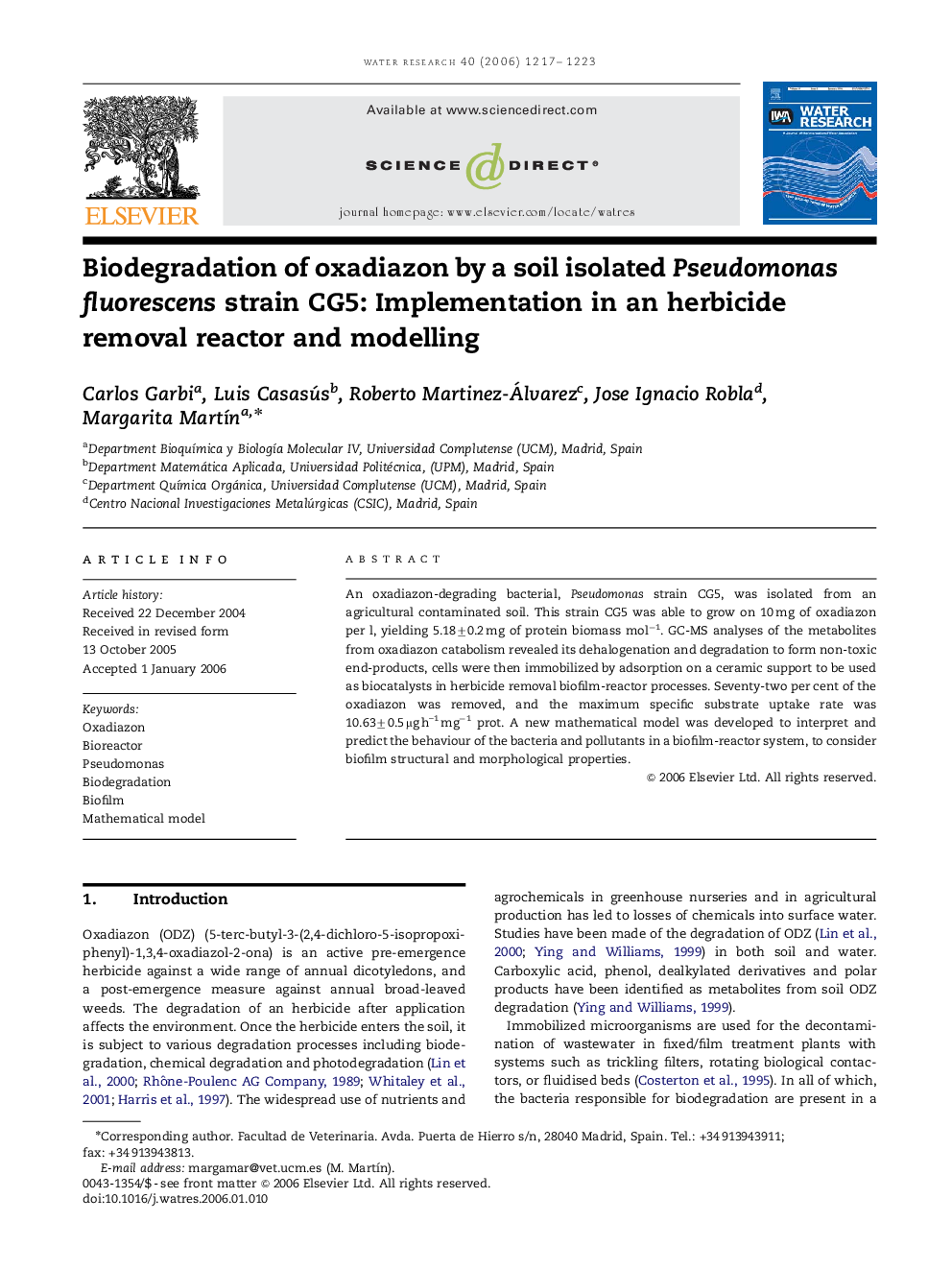| Article ID | Journal | Published Year | Pages | File Type |
|---|---|---|---|---|
| 4486595 | Water Research | 2006 | 7 Pages |
An oxadiazon-degrading bacterial, Pseudomonas strain CG5, was isolated from an agricultural contaminated soil. This strain CG5 was able to grow on 10 mg of oxadiazon per l, yielding 5.18±0.2 mg of protein biomass mol−1. GC-MS analyses of the metabolites from oxadiazon catabolism revealed its dehalogenation and degradation to form non-toxic end-products, cells were then immobilized by adsorption on a ceramic support to be used as biocatalysts in herbicide removal biofilm-reactor processes. Seventy-two per cent of the oxadiazon was removed, and the maximum specific substrate uptake rate was 10.63±0.5 μg h–1 mg−1 prot. A new mathematical model was developed to interpret and predict the behaviour of the bacteria and pollutants in a biofilm-reactor system, to consider biofilm structural and morphological properties.
